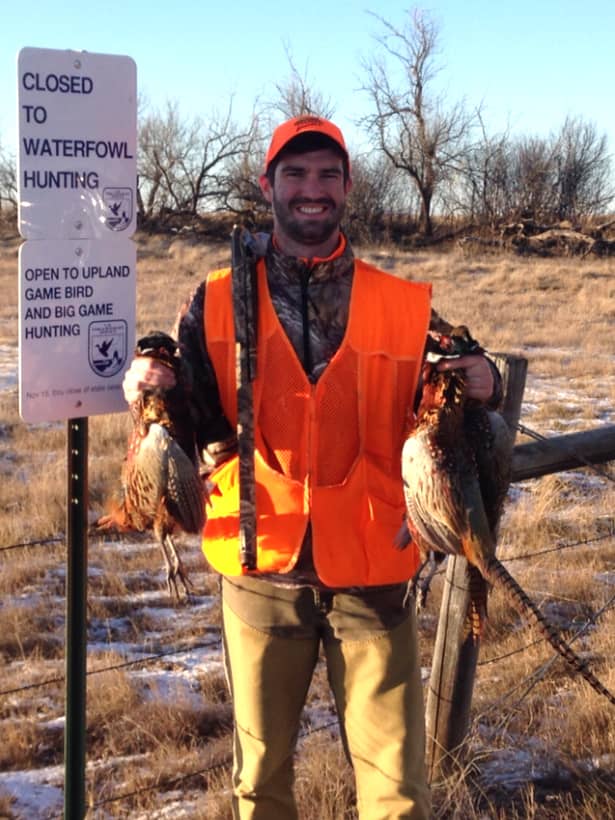
The author with a brace of rooster pheasants taken with non-lead shot. The options available to hunters help them be more flexible in the field and leave less lead on the landscape. DEO Photo by John Bradley.
By John Bradley
Hunters and anglers are the primary funders of wildlife conservation through license fees and
excise taxes on equipment like fishing tackle, guns, and ammunition.
These taxes, resulting from the Pittman-Robertson and Dingell-Johnson Acts, were advocated by hunters and anglers to restore game and fish properties across the country. Take a moment to think about that, where else have you seen a group raise their hand and ask to be taxed more for the things they love to do?
Thanks to the funding from hunters and anglers, the North American Model of Wildlife Conservation, and the landowners who balance agricultural production with wildlife habitat, we have robust wildlife populations across the country today. Unfortunately, what we have learned in the past few decades, though, is that lead in ammunition and fishing tackle is killing non-target species like eagles and other scavengers, along with other waterbirds like swans, pelicans, and common loons through their ingestion of lost sinkers and jigs.
For many years, the only options for hunters and anglers was ammunition and tackle that
contained lead. The result has been untold tons of lead spread across our landscapes and waterways. In 1991, a ban on using lead shot for hunting waterfowl brought about the rapid development of steel and other non-toxic shot choices. As a result, there are now highly effective alternatives to lead shot, bullets, and fishing gear, including steel and bismuth shot, copper bullets, and tungsten and tin fishing weights and jigs.
Personally, making the switch from lead shot to steel shot was convenient for me. I was able to rid myself of the different Ziploc bags of shells for the type of land I was on. The bonus was when I would see ducks cup into a small prairie pothole, I could simply drop my blaze vest and put a sneak on them for a little jump shooting. In terms of efficacy, with today’s steel shot there isn’t much, if any of a drop in performance. I usually shoot #4 steel shot for pheasants, which are often leftover shells from my early season duck hunts. The game pouch on my upland vest since changing from lead to steal sees the same amount of pheasants and grouse. Any misses can be blamed on the shooter and not the steel shot.
For deer and elk hunting, it was a little harder to find the copper bullet that my Tikka liked to shoot. After shooting a couple different brands, the Barnes TTSX seemed to work the best for me. They are expensive but have improved my groups at the range and make me feel better about the gut pile I leave in the field.
Lastly, fishing tackle. After reading about lead’s impact on loons and other waterbirds, I did not throw away all of my jigs. Call me selfish (or cheap), but I couldn’t just toss a couple hundred dollars’ worth of jigs and sinkers in the trash. I still use the lead tackle that I have, but when I need new tackle I try and go lead free. It is much easier to find lead free options online than at the gas station, so plan ahead and buy your tackle before hitting the water.
Lead is toxic to wildlife and people. Over the past several decades we have wisely taken steps to
get lead out of our gasoline, paint, water pipes and other sources that are dangerous to people. It’s time hunters and anglers make the voluntary measure to take it out of the fields and waters we love to explore.
Hunters and anglers have always been leaders in supporting conservation issues, from Pittman-Robertson way back in the 1930s to getting the Land and Water Conservation Fund fully funded this year. Sportsmen and women have been leading the way in conservation. Now it’s time for them to make the change and encourage their friends, family, and other sportsmen to replace lead in their hunting and fishing efforts with effective non-lead alternatives to save wildlife from needless poisoning.
John Bradley is the Executive Director of the North Dakota Wildlife Federation and a contributing writer for Dakota Edge Outdoors.
